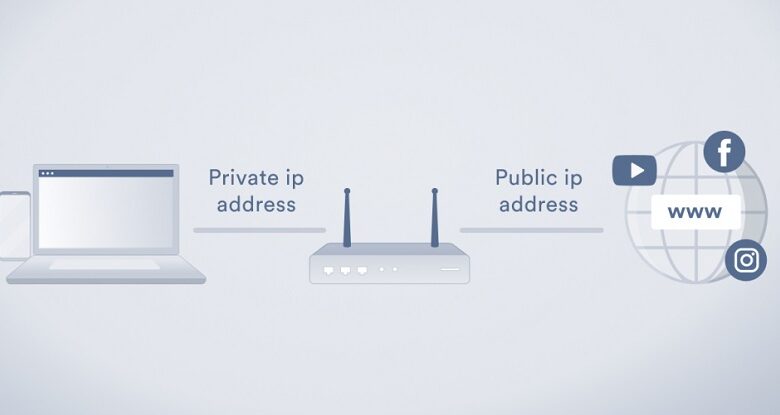Is NAT a Good Enough Firewall? Limitations and Alternatives

In the realm of cybersecurity, the term “firewall” is a familiar one. It’s like the guard at the gate of your digital castle, responsible for preventing unauthorized access and protecting your valuable data from the prying eyes of cybercriminals. One approach often discussed in this context is Network Address Translation (NAT), which has long been intertwined with discussions about firewalls. But is NAT a good enough firewall on its own? Let’s delve into this question and uncover its nuances. This article is organized by Techconnectmagazine.com.
Understanding NAT and Its Role
Network Address Translation, or NAT, is a technique that allows multiple devices in a private network to share a single public IP address. It serves as a mediator between the internal network and the wider internet, translating private IP addresses to a single public IP address for outgoing traffic. This method inherently offers a certain level of security by obfuscating the actual devices behind the public IP. Discover full cone vs symmetric nat.
The Role of NAT in Security
NAT was not initially designed to be a security feature, but rather as a solution to address the depletion of available IPv4 addresses. However, due to its nature of masking internal devices, it does provide some security benefits. It acts as a basic barrier between the public internet and your local network, effectively hiding your device’s IP addresses from potential threats.
The Limitations of NAT as a Firewall
While NAT can offer a certain degree of security, it’s important to recognize its limitations:
1. Lack of Inspection Capabilities
NAT primarily focuses on address translation and port management. It lacks the ability to inspect the actual content of data packets, leaving your network vulnerable to sophisticated attacks that can exploit vulnerabilities in applications and protocols.
2. Inadequate Protection Against Advanced Threats
Modern cyber threats have evolved well beyond the scope of NAT’s capabilities. Advanced malware, phishing attacks, and zero-day exploits can easily bypass NAT, rendering it insufficient as a standalone defense mechanism.
3. No Application Layer Filtering
NAT operates at the network layer, which means it can’t analyze traffic at the application layer. This makes it incapable of discerning between legitimate application traffic and malicious payloads.
4. Single Layer of Defense
Relying solely on NAT puts all your security eggs in one basket. A comprehensive security strategy involves multiple layers of defense, including intrusion detection and prevention systems, endpoint protection, and advanced firewalls. Discover Are all IP Cameras Wi-Fi?
Alternatives to Consider
Given the limitations of NAT, it’s advisable to explore alternative security measures:
1. Next-Generation Firewalls (NGFWs)
NGFWs combine traditional firewall capabilities with advanced security features such as deep packet inspection, intrusion prevention, and application awareness. They offer a more robust defense against modern threats.
2. Intrusion Detection and Prevention Systems (IDPS)
IDPS solutions monitor network traffic for signs of malicious activity and can take action to block or mitigate threats in real-time. They provide an additional layer of security alongside NAT.
3. Unified Threat Management (UTM) Appliances
UTM appliances bundle multiple security features into a single device, including firewall, antivirus, intrusion prevention, and content filtering. This comprehensive approach offers better protection against diverse threats.
Conclusion
In the ever-evolving landscape of cybersecurity, relying solely on NAT as a firewall is no longer sufficient to ensure the safety of your network. While NAT does provide some basic protection by hiding IP addresses, its limitations leave your network exposed to various threats. To build a robust defense against modern cyberattacks, it’s essential to implement a multi-layered security strategy that includes next-generation firewalls, intrusion detection systems, and unified threat management appliances.
FAQs
Q1: Is NAT a firewall?
No, NAT is not a firewall in the traditional sense. It provides address translation but lacks the advanced security features of a firewall.
Q2: Can NAT prevent all cyber threats?
No, NAT is not designed to prevent all cyber threats. It offers limited protection against certain types of attacks but is insufficient against modern and sophisticated threats.
Q3: Are there alternatives to NAT for network security?
Yes, there are alternatives such as next-generation firewalls, intrusion detection systems, and unified threat management appliances that offer more comprehensive security features.
Q4: Can I rely solely on NAT for my network security?
Relying solely on NAT is not recommended. A comprehensive security strategy involves multiple layers of defense to effectively protect against a wide range of cyber threats.
Q5: What is the role of next-generation firewalls?
Next-generation firewalls combine traditional firewall capabilities with advanced features like deep packet inspection and application awareness to provide enhanced security against modern threats.




